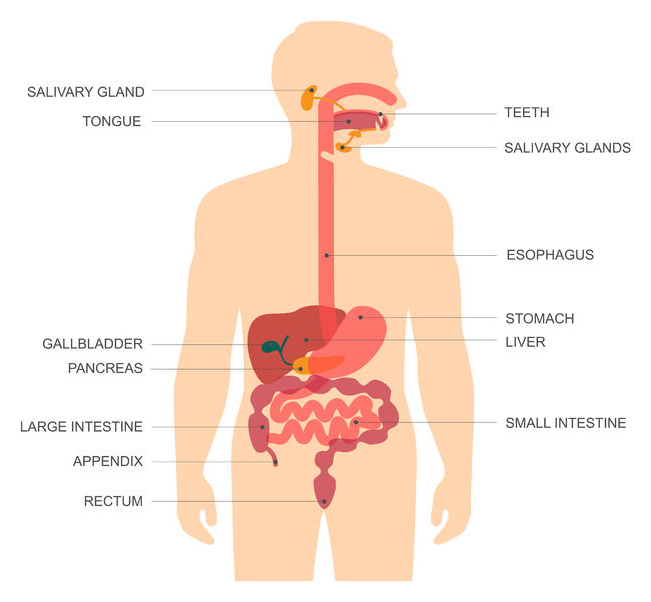The Digestive System
The Digestive System

The role of the digestive system is to turn the food we eat into energy to fuel our body, and to also remove waste products that our body does not need. Take a look at this diagram to see the main parts of the digestive system.
The main functions of the digestive system can be broken down into four stages – click on the buttons below to find out more.
Ingestion
When you eat, the process of digestion begins as soon as you put food into your mouth. Your body produces saliva which helps to make the food mushy and easy to swallow. Your tongue moves the food around your mouth, while you use your teeth to chew. When you’re ready to swallow the food, it is pushed towards the back of your mouth (throat) and into the opening of your oesophagus.
Digestion
When food is passed into your stomach, it works a bit like a mixer…churning and mashing the food, breaking it down into smaller and smaller pieces. There are strong muscles in the walls of the stomach that help to break food down. Gastric juices also help with this process.
Once food has been broken down in the stomach, it is passed into the small intestine.
Absorption
The small intestine is a long tube that is packed underneath your stomach. Despite its name, the small intestine isn’t actually small at all…if you stretched out an adult’s small intestine, it would be about 6.7 metres long!
When it receives food from your stomach, the small intestine breaks it down even more so that nutrients can be extracted from it (these nutrients include vitamins, minerals, proteins, carbohydrates and fats). Once the small intestine has completed this extraction process, the nutrients are passed from the intestine into the blood. Once in your blood, your body can begin to absorb and benefit from these nutrients.
Defecation
After the small intestine has extracted all of the useful nutrients from your food, the leftover waste (the parts of the food that your body can’t use) is passed into the large intestine in order to be removed from the body in the form of faeces.
Before these waste products are removed, they pass through a part of the large intestine called the colon. Here, the body has one last chance to absorb water and any minerals into the blood. As the water is removed from the waste product, it becomes more solid as it moves through the large intestine until it is ready to be passed out of the body as faeces via the rectum and anus.
